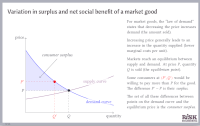Benefit-cost analysis
Socio-economic assessment of projects
Overview
 Public decisions on questions related to
industrial safety must take multiple, partially conflicting criteria
into account:
Public decisions on questions related to
industrial safety must take multiple, partially conflicting criteria
into account:
- protection of human lives and health
- environmental considerations
- economic aspects: profits, jobs
- societal demand for greater transparency
Different people put different weights on these criteria, which are not expressed in the same units. Decision-makers need tools to help them establish tradeoffs between these considerations and to explain decisions to stakeholders and citizens.
Benefit-cost analysis is a method to assess projects or decisions by comparing their societal benefits (fewer fatalities, cleaner water, economic development) with their cost. BCA involves monetizing these criteria, based on citizens’ preferences and their “willingness to pay” for marginal changes in risk. The technique is widely used in the USA & Anglo-Saxon countries, and is used at the EU level (eg. CAFE legislation) for regulatory impact assessment.
This submodule is a part of the risk management module.
Learning objectives
Upon completion of this submodule, you should be able to:
understand the economic concepts underlying benefit-cost analysis
critically review a benefit-cost analysis of a proposed project
assess whether the sources of data used for an analysis are fit for purpose
argue whether the conclusions of an analysis are robust given uncertainty in the input data
Course material
 |
Introduction to benefit-cost analysis of safety investments |
 |
Case study: benefit-cost analysis for land-use planning decisions |
The following video by the OECD NEA explains a concept that is important in benefit-cost analysis, the difference between direct costs and full costs, or externalities.
Other resources
We recommend the following sources of further information on this topic:
HSE principles on CBA in support of ALARP decisions describes the use of benefit-cost analysis by the UK health and safety regulator
UK Office of Rail Regulation report Internal guidance on cost benefit analysis in support of safety-related investment decisions, April 2015
MIT OpenCourseware material for the course on Engineering Risk Benefit Analysis
Book: Cost-Benefit Analysis and the Environment: Recent Developments, OECD publishing (2006, ISBN 9264010041).
Online cost estimator by WorkSafe BC, which helps to estimate the financial cost of various accident scenarios
Book: Rozell, D. J. 2020. Dangerous Science: Science Policy and Risk Analysis for Scientists and Engineers. London: Ubiquity Press. CC-BY licence. This book discusses risk analysis and science policy for scientists and engineers who work on projects that can lead to significant public opposition. It includes a chapter which discusses the use of cost-benefit analysis techniques for decisions on risky technologies.
Published:
Last updated: